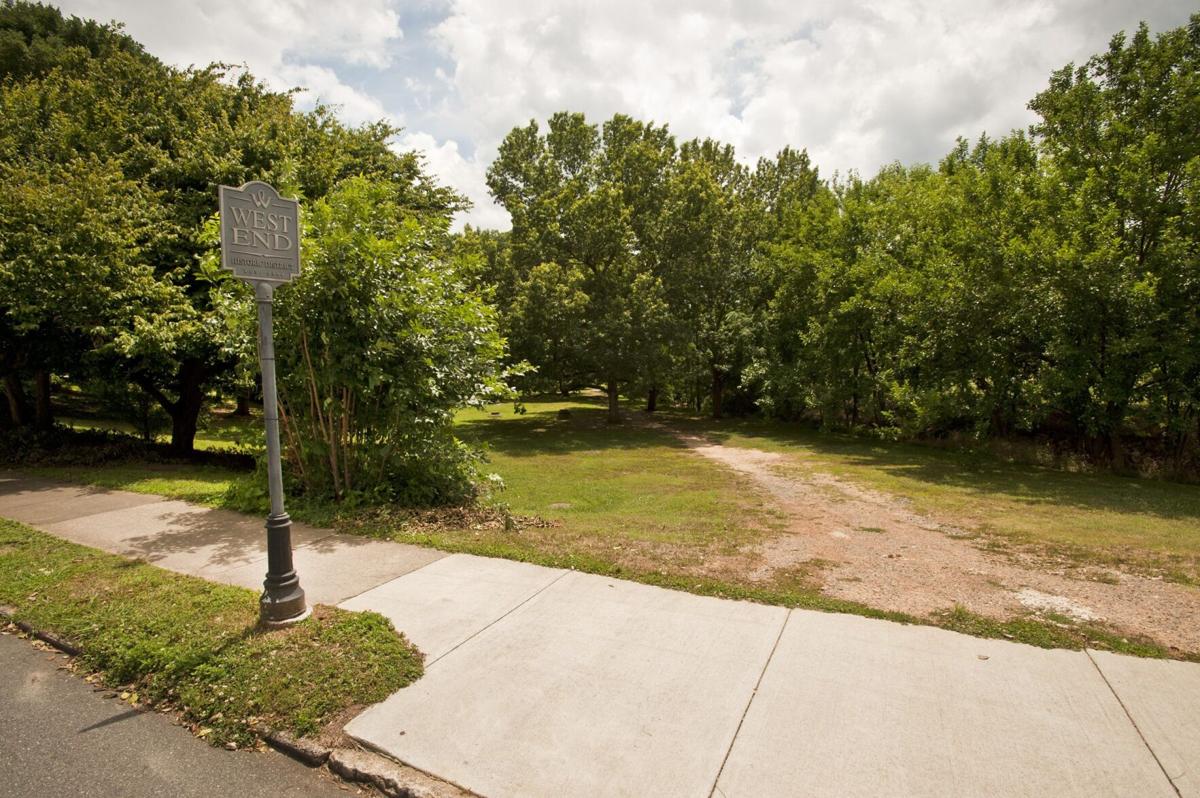easy.indah.link
Whether your property has a modest piece of land or spans vast acres, there are easy ways for it to make a positive difference in the lives of wildlife.
Dara Reid, the director/founder of Wildlife in Crisis, a volunteer-run nonprofit that cares for more than 5,000 injured and orphaned wild animals a year, finds, “Living harmoniously with wildlife protects wildlife and humans alike.”
So, try implementing these compassionate methods to help support wildlife today:
Stop Using Poisonous Products. “Don’t use any pesticides, herbicides, rodenticides, or fertilizers,” Reid advises. “These chemicals cause a tremendous amount of damage throughout our ecosystem and ultimately harm humans as well.”
People typically use pesticides to kill insects and ticks, herbicides to kill weeds, and fertilizers to enrich soil with nutrients, but all three can have detrimental effects on the environment and living creatures that come in contact with it.
Runoff from these toxic chemicals is known to pollute water that humans and wildlife depend on for drinking.
Wildlife in Crisis posted to Facebook on June 17 that the hospital receives many songbirds who are suffering from neurotoxicity due to pesticide exposure and that pesticides also can kill pollinators.
Instead of spraying yards with pesticides, Wildlife in Crisis says it is more effective to spray yourself and pets with a natural, plant-based insect repellent, such as Wondercide.
Additionally, people use rodenticides — such as rat poison — as a quick fix to rid their property of unwanted animals.
According to the National Pesticide Information Center, “Rodenticides are pesticides that kill rodents, including mice and rats. They are often formulated as baits with attractive substances like peanut butter or molasses. Rodenticide baits can provide short-term control of rodent infestations. People, pets, and wildlife are very similar to rodents, so they can also be poisoned by rodenticides.”
Many times, people use rodenticides to target one type of animal, but end up poisoning and killing countless others either directly (through ingesting) or indirectly up through the food chain. For the latter, if a hawk or owl consumes a poisoned mouse, then they, too, are now poisoned; and if that bird of prey gets eaten by a larger predatory animal, then that animal is poisoned, and so on.
Monitor Pets Outside. One of the most common calls wildlife rehabilitators receive is that a dog or cat has attacked a wild animal in their yard. In cases when the animal is not killed on site, it is left badly injured and struggling to hang onto life.
Reid recommends people keep cats indoors and supervise dogs at all times to prevent pets from preying on vulnerable wildlife.
“Free-roaming cats are having a decimating impact on bird populations worldwide,” she said.
The American Bird Conservatory reports that in the United States alone, outdoor cats kill approximately 2.4 billion birds every year.
For pet owners who want to have their cats experience the great outdoors without endangering them or the nearby wildlife, people can purchase or build an outdoor enclosure, sometimes referred to as a “catio.”
Doing so allows cats to feel the breeze, soak up the sun, and have the sense of freedom all from the safety and comfort of an enclosed space.
Similarly, having an area of the yard fenced in for a dog is helpful, not only in keeping the pet safe inside the confines of your property, but also for presenting a physical barrier for other animals trying to enter the yard.
Whether or not a yard is fenced in for pets, it is always important to visually scan the yard for wildlife before letting a dog out. At night, scan the yard with a flashlight beforehand to look for any movement or glowing eyes from wildlife to let them get to safety.
Put Decals On Windows. Birds can inadvertently fly into windows. While sometimes it will just stun them before they are able to fly off, other times it can be a deadly mistake.
To help protect birds from mistakenly crashing into glass, put up decorative static-cling decals on windows or glass doors.
Change them up seasonally or leave them all year round. Depending on how sunny the spot is, it may be helpful to replace the decals every few years, as the colors can fade from the sunlight.
Wildlife in Crisis suggests cutting hawk silhouettes from black contact paper and sticking them on the outside of windows. Doing so breaks up the glass reflection and can safely repel birds.
The Humane Society also recommends putting up waterproof streamers on the windows or painting a scene with soap.
Be Patient. In the springtime and summertime, animals are looking for a safe place to have their babies and raise their young, just like any family would want.
“Wild animals are on the move and tenderly caring for their young. Please be empathetic and give them some space to live in peace,” Reid said.
Whether it is an opossum with babies on its back trekking through your yard or a fox having babies under a shed, they mean no harm and are not looking to stay long.
In the May 21, 2021, Newtown Bee article “Coexisting In Harmony With Wildlife: Foxes, Raccoons, And Rabbits,” Newtown Animal Control Officer Carolee Mason said it precisely: “They don’t know it’s people’s houses. They don’t stay long… be patient. They’re going to eventually go off on their own. They are not going to hurt children or pets. Just be considerate. These parents are just trying to raise their kids like everyone else.”
Landscape Later. One of the easiest ways to help wildlife is to put off landscaping each spring until May.
Reid explained, “Bees, butterflies, birds, mammals, and amphibians are still using leaves as shelter. They are also under planters, wood stumps, and rocks... When you do landscape, please do so gently, plant native plants, and leave trees standing.”
Leaving dead trees standing may seem unsightly to some, but they can be a beautiful addition to helping a wide variety of living creatures.
Wildlife in Crisis’ “Living Harmoniously with Native Wildlife” pamphlet states, “Leave ‘dead’ or live trees standing, they provide vital food and shelter to wildlife. Trees prevent erosion and provide shade. Through photosynthesis, trees absorb carbon dioxide and produce oxygen, especially large mature trees like majestic oaks. Trim branches, if necessary, instead of cutting entire trees. Leave stumps in place so that trees can regenerate.”
Also, before using a lawn mower or weed whacker, it is important to walk the yard and survey the area for any wildlife such as turtles, opossums, and rabbits. If this is not done, it can be fatal for the animals.
Mother rabbits make a small depression in the ground in an area with dense grass for concealment for their nest. They line the nest with dry grass and fur.
For areas with tall grass, check for fawns beforehand. Mother deer will hide their young babies from predators in the grass while they go out to forage for food. Seeing a fawn alone does not mean that something is wrong with it or that it needs human intervention.
“If you see a fawn by itself, do not touch it. Mother deer only return to their fawns a few times a day, mostly after dark,” Wildlife in Crisis’ educational pamphlet states.
The brochure also encourages people to consider planting native plants and letting a portion of their yard grow out into meadows to help the insects and wildlife.
“Let part of your lawn grow into a field. Preserve woodlands and individual trees, especially old growth trees that provide essential food and shelter for wildlife… Build brush piles out of stacks of fallen tree branches and leaves for animal shelters. Shelters are vital for wildlife survival. Hanging nest boxes for birds and mammals on trees is very helpful,” Reid said.
Secure Garbage. Animals are enticed by “people food,” and it rings even more true in today’s world where constant development is destroying habitats and natural food sources are being negatively impacted.
With that in mind, it is not uncommon for animals such as raccoons and bears to rummage through unsecured garbage or sift through recyclables looking for food remnants to sustain them.
To avoid this, Reid said, “Keep garbage cans and recycle bins inside your garage or build a bear-proof shelter for garbage that is accessible to your refuse company.”
For those who have a company pick up their garbage or recycling out at the curb on a certain day, only put the bins out that morning — never overnight.
Other ways to remove potential food sources are to not feed pets outside, and to thoroughly clean outdoor grills after every use.
Also, while many people enjoy feeding birds near their windows to watch them, Reid advises doing so far from the house, to not attract other animals too close to the building. Use a pair of binoculars to observe the birds from a distance.
People can even create a safe refuge for birds in the back of a property by providing natural cover, so that small birds can eat while being protected from birds of prey. Branches can be placed over where they are being fed, and thick shrubbery and brush piles nearby allow birds to flee into them, if they feel threatened.
Contact A Rehabilitator
“All of these animals are here to stay, so we need to have a healthy approach to coexist in peace with them. Be aware that they are out there and live accordingly,” Reid said.
If you happen to find injured/poisoned wildlife or an animal that appears to be orphaned, Wildlife in Crisis requests that people call them at 203-544-9913 before intervening with any wild animal.
“Concerned citizens should call our clinic for advice on how to properly assess situations. Often, wild animals just need a gentle helping hand. Capturing wildlife and placing them in a caged environment is a last resort approach. Captivity is very stressful for wildlife; it is not an approach we take lightly. We want to make sure that wild babies remain with their parents,” Reid explained.
If you get the Wildlife in Crisis voicemail, leave a detailed message (clinic hours are 9 am to 5 pm daily). For more information about Wildlife in Crisis and other helpful wildlife tips, visit wildlifeincrisis.org or e-mail wildlifeincrisis@snet.net.
In town, people can also call the Newtown Animal Control Center at 203-426-6900 to report any animal in need of help.
For a list of additional authorized rehabilitators (individuals and organizations) throughout Connecticut, visit portal.ct.gov/deep/wildlife/rehabilitator/dealing-with-distressed-wildlife.
Alissa Silber can be contacted at alissa@thebee.com.
Consider trimming the branches off instead of cutting down an entire dead/dying tree. This will allow the rest of the tree to continue to provide food and shelter for wildlife. It can also be transformed decoratively, as this Sandy Hook resident did, by attaching solar lights to it. —Bee Photo, Silber
Before doing any lawn care, check areas with tall grass for fawns that may be hidden while their mother forages for food. Check lawns for rabbit nests in the ground before doing any mowing or weed whacking.
Protect birds at a feeding station from being preyed upon by hawks or owls by setting up a safe refuge at the back of property. Place a natural cover of twigs over the food and have thick shrubbery and brush piles nearby for birds to flee into if they feel threatened. —Bee Photo, Silber
Dead trees that do not pose a danger can be left in yards to provide food and shelter for wildlife. They are great for woodpeckers, who prefer soft, decaying wood when looking for a variety of insects, and for raptors, who use them as perching points. —Bee Photo, Silber
The Link Lonk
June 29, 2021 at 07:02PM
https://www.newtownbee.com/06292021/create-a-wildlife-friendly-yard-today-with-these-easy-tips/
Create A Wildlife-Friendly Yard Today With These Easy Tips - The Newtown Bee
https://news.google.com/search?q=easy&hl=en-US&gl=US&ceid=US:en





